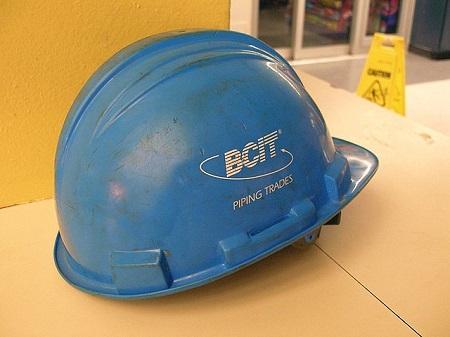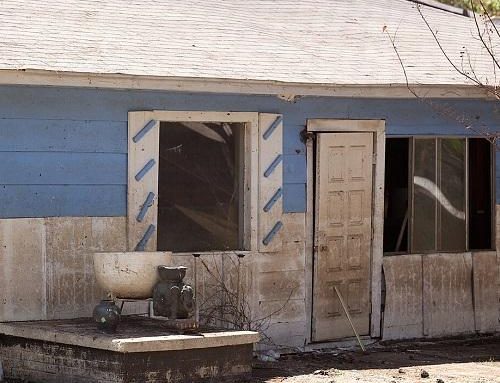One of the most important pieces of safety equipment on a construction site is the hard hat. Not only do hard hats protect the head from falling debris and other hazards, but they also serve as a visible symbol of safety on the job site.
Construction sites are known to be one of the most dangerous industries in the world, with thousands of injuries and fatalities every year. Falls, struck-by incidents, and electrocutions are among the leading causes of injury and death on construction sites. One of the most important pieces of safety equipment on a construction site is the hard hat. Not only do hard hats protect the head from falling debris and other hazards, but they also serve as a visible symbol of safety on the job site.
In this article, we’ll cover the top 8 tips for using hard hats correctly and keeping yourself safe on the job. Always wear a hard hat when working on a construction site. It’s a simple rule, but one that is often ignored. Hard hats are designed to protect the head from falling debris, electrical hazards, and other hazards commonly found on construction sites. Wearing a hard hat could mean the difference between life and death in the event of an accident.
In order to ensure the safety of all workers on a construction site, it’s essential to follow the guidelines and best practices when it comes to the use of hard hats. In the following list, we will go over the top 8 tips for using hard hats correctly, including choosing the right size, keeping them in good condition, and making sure they are ANSI compliant. By following these tips, you can help keep yourself and your colleagues safe on the job site.
- Always wear a hard hat when working on a construction site. It’s a simple rule, but one that is often ignored. Hard hats are designed to protect the head from falling debris, electrical hazards, and other hazards commonly found on construction sites. Wearing a hard hat could mean the difference between life and death in the event of an accident. The construction industry is one of the most dangerous industries in the world, with thousands of injuries and fatalities every year. Falls, struck-by incidents, and electrocutions are among the leading causes of injury and death on construction sites. Hard hats are designed to protect the head from impact, penetration, and electrical hazards, which can prevent or minimize the severity of head injuries. Not wearing a hard hat on a construction site is not only a violation of safety regulations but also a reckless act that puts your life and the lives of others at risk.
- Make sure your hard hat is the right size for your head. Hard hats come in a variety of sizes, so it’s important to choose one that fits snugly but comfortably. A hard hat that is too large or too small can be uncomfortable to wear and may not provide adequate protection. The fit of a hard hat is essential for its effectiveness in protecting the head. A hard hat that is too large may not stay in place during an impact, allowing the head to move inside the hard hat, increasing the risk of injury. A hard hat that is too small may be uncomfortable to wear, causing the worker to take it off, or may not provide full coverage of the head, leaving some areas exposed. Hard hats come in different sizes, and it’s essential to choose one that fits comfortably and snugly on your head. You can measure your head size by using a tape measure or by trying on different sizes at a store. Once you have the right size, adjust the suspension system to fit your head snugly.
- Keep your hard hat in good condition. Hard hats are made of durable materials, but they can still be damaged over time. Check your hard hat for signs of wear or damage before each use, and replace it if it shows any signs of damage. Hard hats are designed to protect the head from impact, penetration, and electrical hazards, but they can only do so if they are in good condition. Hard hats are made of durable materials, but they can be damaged over time by exposure to sunlight, heat, chemicals, or impact. Hard hats should be inspected before each use to check for signs of wear or damage, such as cracks, dents, or deformation. If a hard hat shows any signs of damage, it should be replaced immediately as it may not provide adequate protection. Hard hats have a lifespan, usually between 2-5 years, depending on the manufacturer, after which they should be retired, regardless of their appearance.
- Make sure your hard hat is ANSI compliant. The American National Standards Institute (ANSI) sets standards for the manufacturing of hard hats. Look for the ANSI label on your hard hat to ensure that it meets the necessary safety standards. The American National Standards Institute (ANSI) is a nonprofit organization that sets standards for various products and services, including hard hats. ANSI standards for hard hats specify the requirements for impact resistance, penetration resistance, electrical insulation, and other performance criteria. Hard hats that meet ANSI standards have been tested and certified by an independent laboratory to ensure that they meet the minimum safety requirements. To ensure that you have a compliant hard hat, look for the ANSI label on the hard hat, which verifies that it has been tested and certified.
- Don’t modify your hard hat. Hard hats are designed to protect the head in specific ways, and modifications can change the way they work or make them unsafe. Never drill holes or make other changes to your hard hat. Modifying a hard hat can change its performance and make it less effective in protecting the head. Hard hats are designed to protect the head in specific ways, such as by spreading the impact energy over a large area or by providing electrical insulation. Modifying a hard hat, such as by drilling holes or attaching items to it, can change its performance and make it less effective in protecting the head. Additionally, some modifications may even create new hazards, such as electrical shock or penetration hazards. To ensure your safety, always use hard hats as they are designed and never make any modifications to them.
- Use the appropriate hard hat for the job. There are different types of hard hats for different types of hazards. For example, if you’re working with electricity, you’ll need a hard hat with electrical insulation. Make sure you’re using the right type of hard hat for the job. Different types of hard hats are designed for different types of hazards. For example, a hard hat with electrical insulation is required when working with electricity, while a hard hat with a full brim is required when working in bright sunlight. Using the wrong type of hard hat for the job can increase the risk of injury or death. To ensure your safety, always use the appropriate type of hard hat for the job. Check your company’s safety manual or consult with a safety professional to determine the right type of hard hat for your specific job.
- Properly store your hard hat when not in use. Hard hats should be stored in a clean, dry place away from heat or direct sunlight. Avoid storing hard hats in vehicles, as extreme temperatures can cause damage. Proper storage of hard hats can help extend their lifespan and ensure they will provide adequate protection when needed. Hard hats should be stored in a clean, dry place away from heat or direct sunlight. Exposure to extreme temperatures can cause the hard hat’s shell to warp or crack, which can affect its performance in protecting the head. Avoid storing hard hats in vehicles, as the extreme temperatures inside a car can cause damage. When not in use, store your hard hat in a designated place, such as a locker or a toolbox, to keep it safe and accessible.
- Always wear your hard hat in the correct position. Hard hats should be worn with the brim facing forward, and the suspension system adjusted to fit snugly on the head. Wearing a hard hat improperly can decrease its effectiveness in protecting the head. Wearing a hard hat in the correct position is crucial for its effectiveness in protecting the head. Hard hats should be worn with the brim facing forward, which helps protect the face and neck from falling debris and the sun. The suspension system should be adjusted to fit snugly on the head, which helps keep the hard hat in place during an impact. Wearing a hard hat improperly, such as backward or tilted to one side, can decrease its effectiveness in protecting the head and increase the risk of injury. Always make sure you wear your hard hat in the correct position and adjust it as needed throughout the day.
In conclusion, hard hats are a crucial piece of safety equipment in the construction industry, and it is important to use them correctly to ensure the safety of yourself and your colleagues. Remember to always wear a hard hat on a construction site, choose the right size, keep them in good condition, use the appropriate type of hard hat, store them correctly and wear them properly. These simple tips will help keep you safe on the job site. It is also important to always follow the safety regulations and guidelines set by your employer and OSHA to ensure the overall safety of the job site. Stay aware of the hazards present on the job and take the necessary precautions to protect yourself. Remember, safety is not just a responsibility, but a priority.










